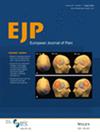Assessment of Mechanical Detection Thresholds in Healthy Participants and Patients With Neuropathy: A Comparison of OptiHair2 and Aesthesiometer II
Abstract
Background
Mechanical detection thresholds (MDTs) are used to assess somatosensory function but can only be evaluated considering the individual sex, age and tested body region. The German Research Network on Neuropathic Pain (DFNS) provides reference values for OptiHair2, a sensitive and expensive glass filament, while nylon filaments such as the Aesthesiometer II are more durable and affordable. In this study, we compare both devices regarding their use for MDT assessment in a variety of participants, thus intending to achieve a higher range for MDT.
Methods
MDTs of healthy children (< 18y), healthy adults (> 18y) and adult patients with symptoms of suspected polyneuropathy were determined using OptiHair2 glass filaments (0.25-512mN) and Aesthesiometer II nylon filaments (0.63–235.36mN), using the method of limits according to the DFNS protocol. Testing was performed on the cheek, hand and foot in healthy participants; patients were tested on the hand and foot only. Concordance Correlation Coefficient (CCC), Pearson correlation and linear regression analysis were performed.
Results
The study included 55 participants (33 female, 30 healthy adults aged 22–62 years, 10 healthy children aged 9–15 years, 15 patients aged 35–86 years). There was a relevant concordance of MDTs between Aesthesiometer II and OptiHair2 at the hand (CCC children = 0.14, healthy adults = 0.56, patients = 0.66) and foot (CCC children = 0.24, healthy adults = 0.66, patients = 0.70) but not on the cheek (CCC children = 0.00, healthy adults = 0.01).
Conclusions
The Aesthesiometer II can be a viable replacement for OptiHair2 in less densely innervated areas like the feet, when screening for polyneuropathy, especially in bedside settings due to its robust materials. However, its stronger lowest force (0.63 vs. 0.25 mN) implicates poorer sensitivity for MDT assessments when testing highly innervated areas like the face.
Significance Statement
This study suggests the use of robust Aesthesiometer II nylon filaments as an alternative to the more fragile OptiHair2 glass filaments for MDT assessments. While we find that only OptiHair2 seems to be suitable for more densely innervated areas like the face, Aesthesiometer II's durability and cost-efficiency make it a useful bedside tool, especially for assessing suspected polyneuropathy in less densely innervated areas like the feet.


 求助内容:
求助内容: 应助结果提醒方式:
应助结果提醒方式:


